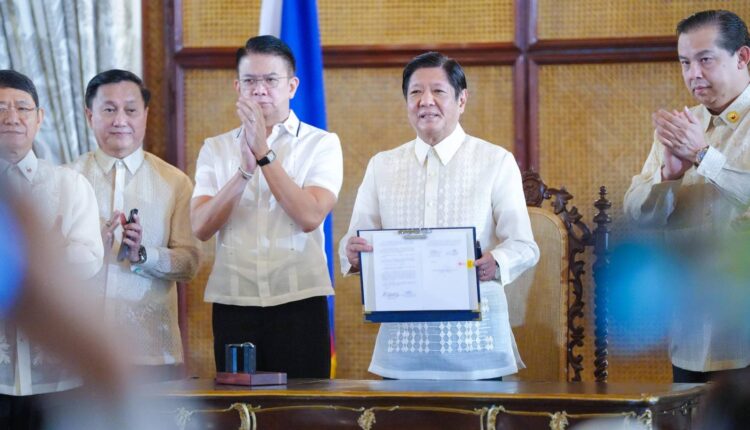NEW MARITIME LAWS FAIL TO PROMOTE PH RIGHTS
China stiffens resolve; PH painted as “troublemaker in chief”

THE Philippines continues to paint itself in a corner diplomatically as its two newly enacted maritime laws deepen its differences with China while also creating tension with Malaysia.
China’s Ministry of Foreign Affairs (MFA) issued a strongly worded statement on November 9, a day after Pres. Ferdinand Marcos Jr. signed into law, RA 12064 (Philippines Maritime Zone Act) and RA 12065 (Philippines Sea Lanes Act), calling the measures an attempt by Manila to “whitewash its illegal claims and actions in the South China Sea.”
“The Philippines’ attempt to whitewash its illegal claims and actions in the South China Sea by adopting the Maritime Zones Act in the name of implementing UNCLOS is illegal and invalid.
“The Act seriously violates the DOC and will inevitably complicate the situation in the South China Sea.
“China will firmly respond to any infringement or provocative actions taken by the Philippine side in the South China Sea citing the Act as the ground,” reads part of the MFA readout to the press.
Philippine Ambassador to China, HE Jaime Flor Cruz, was also summoned to the Foreign Ministry on the day Marcos signed the new laws to show Beijing’s displeasure over their passage.
Despite this, the Philippines is unfazed with the President reiterating the laws are meant to “protect our sovereign rights our sovereignty.”
“(They) serve a purpose that we define closely what those boundaries are, and that’s what we are doing,” the President told the media during an event in Parañaque City on November 11. He added he was “not surprised” by Beijing’s reaction.
During the signing ceremony in Malacañan last November 8, President Marcos said:
“With these pieces of legislation, we align our domestic laws with international law, specifically the UN Convention on the Law of the Sea or UNCLOS, improve our capacity for governance and reinforce our maritime policies for economic development and for national security.”

Scarborough Shoal (Bajo de Masinloc), Second Thomas Shoal and Sabina Shoal, formerly not being claimed by China before the signing into law by Pres. Ferdinand Marcos Jr., of two new maritima laws (details from an article at the SCMP).
Using standards under the United Nations Convention on the Law of the Sea (UNCLOS), the RA 12064 and RA 12065 listed the country’s internal waters, archipelagic waters, territorial sea, contiguous zone, exclusive economic zone, continental shelf and sea lanes.
But while “harmless” on the surface, the laws, however, found disfavor with Malaysia, which also sent a note of protest to the Philippines, claiming the areas and sea lanes identified also infringed on its own sovereign territories, especially in North Borneo (Sabah), which is already a lingering flashpoint between the two countries.
The Associated Press and Malaysia-based Benar News, both reported last November 14, that Mohammad Alamin, Malaysia Deputy Foreign Minister, informed the country’s Parliament that they already protested the Philippines’ new maritime laws.
“We’ve finalized and reviewed key issues in our protest note, which we’ll send today [Thursday] to affirm our commitment to protecting Sabah’s sovereignty and rights,” Alamin said, as quoted by Benar.
In the same article, Benar quoted Benjamin Blandin, an analyst at the non-profit Yokosuka Council on Asia-Pacific Studies as describing the Philippine government as “trouble-maker-in-chief” in the region. “From the point of view of Malaysia, the Philippines is the troublemaker-in-chief.”
Blandin also accused the Philippines of “destroying” Malaysian ‘sovereignty markers’ in the Spratly in the 1970s and 1980s, similar with what Vietnam did to them.
“So based on this bilateral ‘history,’ Malaysia can only interpret negatively any further move of the Philippines, at least as long as the Sabah case is not solved,” Blandin said.
Signaling it has put diplomacy in the back burner, China also released a new map on November 10, claiming islands and reefs in the South China Sea to include those under the Philippines’ exclusive economic zones (EEZs) including Scarborough Shoal (Bajo de Masinloc), Second Thomas Shoal and Sabina Shoal, according to reports by the Associated Press, The Independent and the South China Morning Post.
These areas would now be placed under the administrative jurisdiction of Shansa City.
With China and the Philippines respectively making official their respective claims in the contested areas, the Philippines, like Ukraine, would now have to rely on America’s assurances of its “ironclad” commitment of support in case it is forced to resort to a military measure to enforce its laws.



Comments are closed.